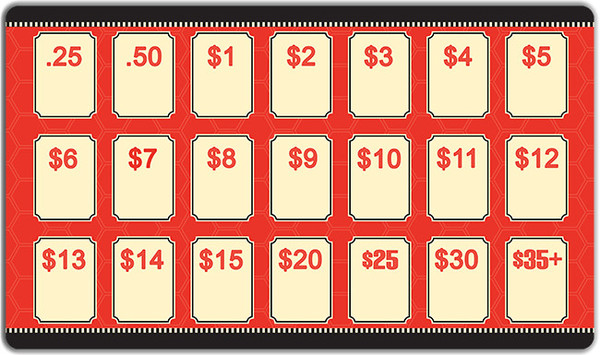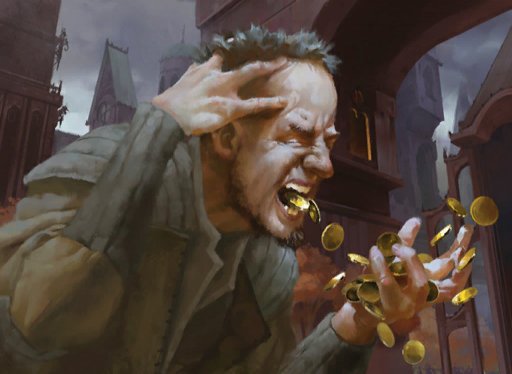Look, I’ve been there. Most people who’ve been playing Magic for a long time have.
You need money. Stuff happens. Job problems, car problems, unexpected expenses.
You look at your mostly-foil EDH deck and think, “This is the solution!”
And you’d be right to think that. I’ve certainly sold large parts of a deck/my collection, and done so for the following reasons:
-To pay for a new Tempurpedic mattress
-To pay for the moving expenses, including the security deposit on the new place
-To get through the month when a payroll error cut my check by 75%
-To pay for a new transmission
-To pay for a Hawaii trip
-To pay for a bounce house for my daughter’s sixth birthday
And so on.
With the world being in the shambles that it’s in, I want to walk you through the steps that have worked out for me, and then you can use these if needed. Magic is that rarity among hobbies: you can get a lot of the money you put in as cash back if it’s needed.
Before I get into how to sell, I want to nudge you in the direction of not being a seller, but a buyer. Being able to purchase cards during a time of economic problems is going to be very good for your collection’s long-term health. Real estate investors know this well: when everything gets cheap and people are desperate, offer the lowest prices you can and just be patient.
Problem is, if you’re secure enough to be buying cards during a time like this, you’re not stuck as many of us are. I’m not judging one way or the other; I’ve been the desperate seller and I’ve been the buyer paying cash for 60% of the retail prices.
Step one: Separate your cards into tiers
I mean price tiers. You’ve likely seen assorted buylist playmats, like these:

I don’t need you to sort your entire collection on one of these, merely sort out that which is $50+, $20+, $10+, and then the rest.
Whatever amount of cash you need to raise, start by selling the big cards first. There’s two good reasons to start with the big ticket items. First is that you might be able to raise what you need while disrupting your cards the least. If all your sales are coming out of your trade binder, then that’s less relevant, but if you’re looking at the ten Revised duals you’ve spent forever trading for in your Reaper King deck…replacing those lands with something 75% as good is quite feasible.
The second reason to sell the priciest stuff first is that your fees will be minimized. I’m not going to break down TCGPlayer vs. eBay in terms of fees and costs, I have yet to sell on TCGPlayer and don’t feel I can make that call. If you’re selling online, you’re going to be charged a percentage of the value of the sold cards, and you want to do this in as few overall sales as possible.
Now, take a deep breath, and compare your cards to what’s on sale on assorted sites. What’s the retail? What’s the buylist? What’s the lowest price on TCGPlayer?
Step 2: Ask your friends/playgroup what they’d like to buy.
This can be awkward but the truth is that most of us will sell cards at some point, and will be receptive to hearing you out. Please, for the love of everything, plan ahead with what’s for sale and what your asking price is. Don’t play coy, don’t try to heroically manipulate the situation. Look at TCG low, knock off 10 or 15 percent, and ask for that much in cash. Be open to negotiating, because you’ll make more selling in person than you will online. Handing cash over doesn’t incur fees, taxes, or shipping costs. A card you sell on Ebay for $150 will mean you profit about $125 after those costs, so if your pal counters your $150 ask with $140, you should accept.
Be honest with these folks, too. Say you need X in cash, and ask if they’d like to pick cards that add up to that. Stay strong in your prices, as tax is real for buyers and being a bit under TCG low makes everyone feel like they are getting a deal. Selling a few cards together can go well and solve your problems with no extra work.
Use every tool at your disposal. Start with the people you know in person, and then move online. Twitter, Discord, Facebook, all of these are ways to make a connection and sell some cards to get the cash you need. Ask others to promote it.
This would also be the time to use Craigslist or Offerup or whatever selling methodology you like. The goal here is to make a sale without it requiring taxes or fees, but please be safe when meeting strangers with your valuable possessions.
Step 3: Sell on eBay/TCG
I much prefer the Buy It Now setting on eBay, but I always allow offers. Again, you’re motivated to get the cash. Accept that you are giving up some value in order to turn the cardboard into money, and accept offers that are within 5-10%. Giving up a little there can really speed up the process. I tend to set my prices around TCG low, because I can offer free shipping and TCGPlayer has to charge tax. You’re still coming out ahead.
Try to sell your cards as a lot, so you avoid the time, hassle, and costs of many smaller sales. I know that seems self-evident, but there’s a surprising number of complete decks for sale online. You can go that route, or sell five at a time…whatever you want.
If you’re not able to make the sale here, then there’s one more step to go.
Step 4: Buylisting
There’s no shame in this, it’s just the method that yields the lowest % of your cards’ value into cash. On a buylist, you’re lucky to get 50% of the retail in cash, generally speaking. It’s better than nothing, and the advantage here is that you can hunt around a little and find the best prices. You can also ship off a whole bunch of cards in a buylist to a single vendor, if you live near to one, you can bring them to a store yourself. For large buylists, call ahead of time and tell them you’re interested in selling them X dollars worth of cards, so they can be prepared.
I want to have some positivity here, so let me leave you with two solid buys:
Fae of Wishes (Showcase nonfoil): You can get these around $2 and there are a couple of different decks in Standard and Pioneer that use them. I love that I can buy a nonfoil that is a bit special, because tournament players don’t like having just a few foils (pretty easy to pick out warped foils in a deck) and I especially love that this always gets played as the full playset.
Uro, Titan of Nature’s Wrath (pack nonfoil): Look, it’s rare that I think a $40 card is a good buy for future use, but Uro has fifteen months to make an impression on Standard. This is the price while we’re still opening Theros packs. Your store, as of today, can start holding Mystery events and in a month, we’re doing the prerelease for Ikoria.
Uro’s supply is near to maximum and it’s $40. If you play Standard, I’d get these now before it rises to $50 or even $60. These are the regular copies I’m talking about, nothing special.
Cliff (@WordOfCommander) has been writing for MTGPrice since 2013, and is an eager Commander player, Draft enthusiast, and Cube fanatic. A high school science teacher by day, he’s also the official substitute teacher of the MTG Fast Finance podcast. If you’re ever at a GP and you see a giant flashing ‘CUBE DRAFT’ sign, go over, say hi, and be ready to draft.
